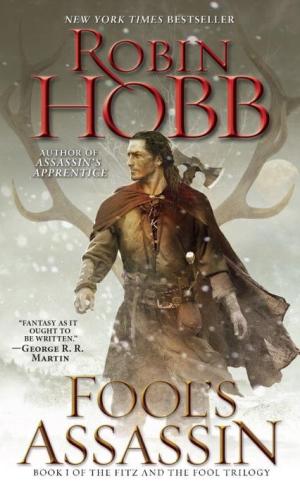When I was small, I was not a healthy child. I recall many days spent in bed, not feeling well at all. But, with that duology that all small children seem to possess, I was also terribly bored. And a bored, sick child is a joy to no one, least of all herself. Too young to read, and vastly disinterested in dollies and such, those days were miserable for me.
Let me hasten to remind you that at that time, our family had only recently acquired a small, black and white television, and it resided in the living room. There were no personal electronics, no Gameboys or DVD players. The family radio was almost as big as I was, and it, too, resided downstairs. I made a brief foray into coloring books as a pastime, but the crayons too often rolled off into the bedclothes, and other than the occasional maze to solve, I found the process of coloring in someone else’s image almost unbearably tedious.
I think it was my father who came up with the solution. In those days, almost every kitchen was equipped with a breadboard, a wooden surface for kneading bread that pulled out above the kitchen drawer. My father brought that into the bedroom, propped me up with pillows and set it on my lap. Then he opened a box and spilled out the jigsaw puzzle pieces. I was immediately intrigued.
He taught me a routine for the puzzles. First, one turned up all the pieces, then one sorted out the edge parts and put the pieces together to form the frame. And after that, one gradually filled in the middle. Doubtless they started me with simple puzzles, but I don’t recall them at all. Anything less than 100 pieces was no fun at all, as it was too quickly done.
Wooden puzzles also delighted me, for each piece had to be placed in a certain order to reassemble the barrel or cube or sphere. But they were too easy to memorize, and so I would always go back to the challenge of the jigsaw puzzle.
Even after I learned to read, jigsaw puzzles remained a strong favorite for sick days. I favored images of paintings over photographs. I liked thinking about the artist’s use of colors and shading. I despised the “trick” puzzles, the ones that were solid red or swirling stripes. I treasured my puzzles and took meticulous care not to lose the pieces. I had obsessive rules for them. When they went back into the box after completion, they had to be completely disassembled. It felt like cheating if I opened the box and took out pre-assembled chunks from previous sessions.
The passion stayed with me through my teen years. For a time, there was a fashion for circular puzzles, usually featuring an image of myriad butterflies or fish or wild flowers. One of my most treasured puzzles was a two sided one; One side was Bilbo’s map from The Hobbit and the other side was the original cover art for the book.
When I became a parent, I found that jigsaws, both simple and later the more complicated ones, were a pastime that could be shared in the evening, the pieces spread out on the kitchen table and each person claiming a share of the puzzle. One child would claim all the red pieces, another would take the ones with shades of yellow or blue, and we would assemble the frame and then gradually work the middle. There was, of course, always a struggle to see who could put in the very last piece, and though it was forbidden, the practice of hiding a piece or two under the table was often tried.
My fondness for jigsaw puzzles continues to this day. Every Christmas, I gift myself a new 1000 piece Springbok Christmas themed puzzle. A new puzzle and the time to work it is my reward at the end of a book deadline. The challenge is always to keep Diego, my very large cat, from either sleeping on it, or scampering off with a mouthful of puzzle pieces. My rather unsatisfactory solution to this is to work the puzzle on the table surface, and carefully spread the tablecloth over the top of it when I’m not there to guard my work in process. This can make the surface a bit bumpy for eating dinner, but my husband has become accustomed to that!
My most precious puzzles are both custom ones. When I was the guest of honor at Loncon, the Concom surprised me at the end of the convention with a gift of two of my John Howe covers converted into fine wooden jigsaw puzzles, made by Wentworth.
These puzzles feature shaped pieces, such as a fish or a bird, called whimsies. I find them delightful. I also have two tiny Jackie Morris art puzzles by Wentworth. They have fewer pieces but are still surprisingly challenging to assemble, even after several workings.
There is something both peaceful and challenging about setting out all the bits of a puzzle on a table and running my eyes over them. I truly believe in the power of the human brain, and I like to think that even if my brain does not immediately tell me, taking a few moments to run my eyes over all the pieces programs my brain to find the correct home for each one. I like to work by color and shape, not referencing the image on the box. It’s a fine game to play alone, to challenge myself to find a piece and fit it into the existing puzzle on one try. As my collection of puzzles grows ever larger on its special shelf, I sometimes wonder what my fascination is with putting them together.
Then I discard that concern and immerse myself in the puzzle.
Originally published May 2017.
Buy the Book


Fool’s Assassin
Robin Hobb is the author of the Farseer Trilogy (Assassin’s Apprentice, Royal Assassin and Assassin’s Quest). She returns to Buckkeep, and two of her favorite characters, with the Fitz and the Fool trilogy—Assassin’s Fate, the final novel in the new trilogy, is available now from Del Rey.










